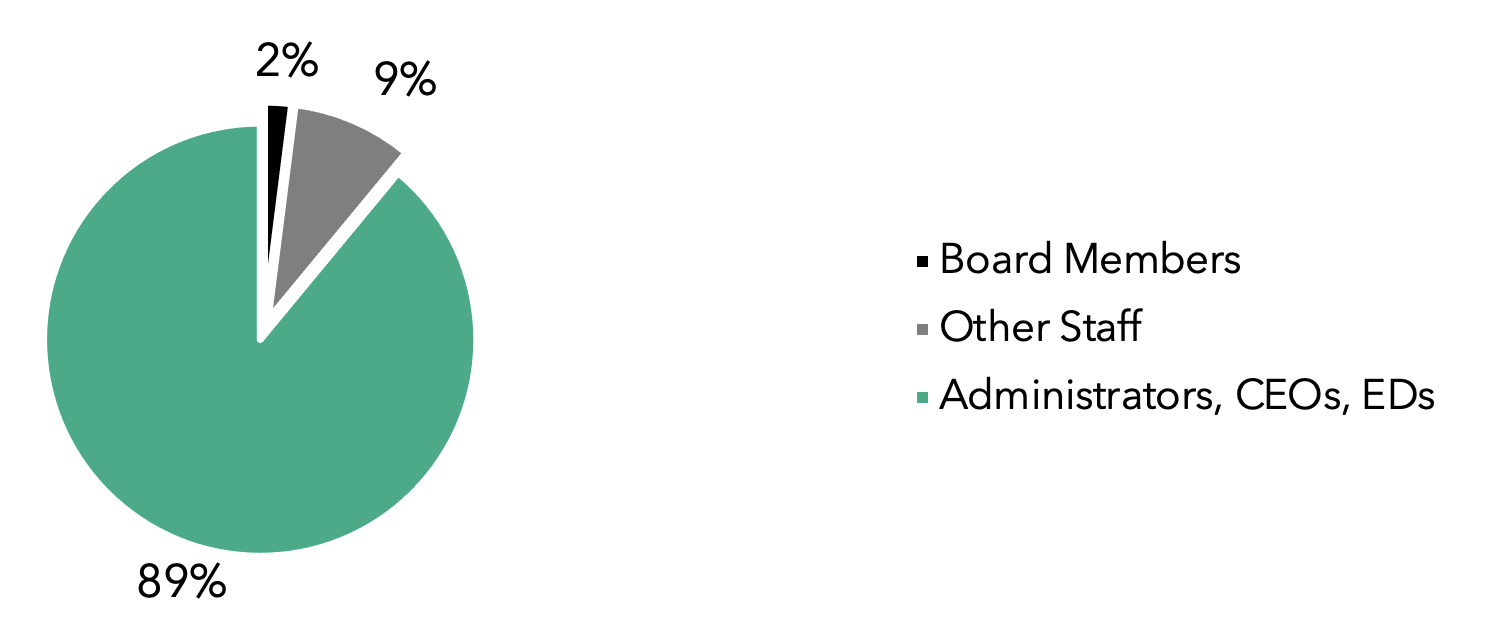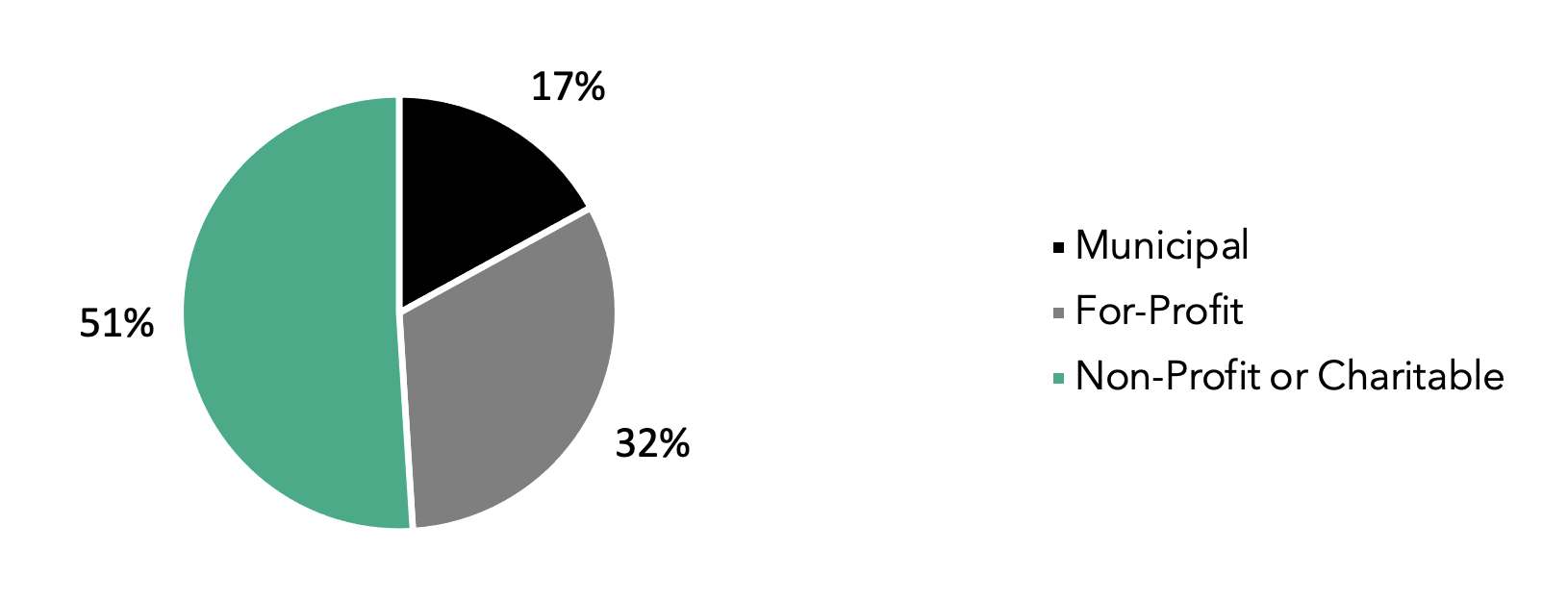We designed the research project using a two-phase mixed-methods approach to data collection. First, we surveyed long-term care leaders, to gather foundational information about corporate governance in their organizations. Second, we interviewed some of our survey participants, to learn more about their survey responses, and to inquire further about the corporate governance structures and processes in their long-term care homes. We wanted to hear directly from providers about successes and challenges.
We created the survey using Qualtrics online software. In the summer of 2021, we distributed the survey via three channels: 1) a contact list of 570 administrator emails, which we sourced from long-term care organization websites, and from provincial health and social services directory thehealthline.ca, and 2) and 3) the online newsletters of project supporters and sector associations AdvantAge Ontario and the Ontario Long Term Care Association. Together, these organizations represent almost all long-term care homes in the province, through their membership bases. We based our sample size on the total number of long-term care homes in Ontario (627).
We invited participation from people with knowledge of the corporate governance structures and processes of their long-term care organizations. Potential participants included administrators and other senior staff, owners and executives, and board members. We primarily targeted administrators, as they are one of the most accessible groups within long-term care leadership, due to the public disclosure of their contact information via thehealthline.ca. We knew they were less likely to be board members, and that they might not have direct access to or regular interaction with the board (especially in the case of multi-home long-term care organizations). However, understanding an administrator’s perception of and interaction with the board of directors, is vitally important to understanding the corporate governance landscape in long-term care. Senior managers are (typically) integrally involved in sharing information with their boards of directors, and implementing processes and procedures approved by the board.
The survey was active for a period of four weeks. 134 long-term care leaders took the time to submit complete or partially complete surveys, a response rate of 24% (relative to the number of people we contacted directly). To encourage participation and mitigate against biases, we did not require responses for any of the questions. As a result, participation rates varied among questions. Possible limitations in the targeted population group’s knowledge of corporate governance structures and processes within their organization—as well as potential discomfort or hesitation around participating in the survey, given heightened public attention on long-term care homes during the pandemic—might explain both the overall response rate, and the variable response rates between questions.
In the survey, we first asked participants to identify their role in the long-term care organization they represent. As shown in Figure 2, most respondents (n=134) identified as senior staff. 89% identified as administrators, CEOs, and EDs; 9% as other long-term care home staff; and 2% as board members. Therefore, the responses we received from participants to subsequent survey questions primarily represent the perspectives of senior managers, and their observations of or relationships to the board.
Figure 2. Survey Participants by role (n=134)

Participants were also asked to identify the type of home they represent (see Figure 3). 51% of respondents (n=134) indicated that they represent non-profit (37%) or charitable (14%) homes, 17% identified as municipal representatives, and 32% as for-profit representatives.
Figure 3. Survey participants by long-term care home type (n=134)

Relative to the total distribution of long-term care homes in Ontario (see Figure 1), our respondent population skewed more heavily towards representing non-profit and charitable homes. 27% of homes (n=627) in Ontario are non-profit or charitable, while over half of our respondents identified as non-profit or charitable home representatives. In contrast, 57% of long-term care homes in Ontario are classified as for-profit, while 32% of our respondents identified as for-profit representatives. In summary, responses to our survey appear to disproportionately reflect the experiences of non-profit long-term care organization representatives, with almost all responses from administrators’ perspectives.
We also asked participants to indicate if a governing body (such as a board of directors) is in place at their organization. If the participant indicated their organization has a board, we asked further questions about the board’s members and activities, to learn more about the participant’s understanding of their organization’s corporate governance structure and processes. Questions included How frequently does the governing body typically meet? Do members of the governing body visit the long-term care home(s) you represent? Does the governing body have a committee with a formal mandate to monitor and oversee long-term care home resident health, safety & satisfaction?
At the end of the survey, we invited participants to indicate their interest in participating in follow-up interviews. We met with 15 leaders, to learn more about their survey responses, and to inquire further about governance structures and processes in their long-term care homes. It was important to hear directly from long-term care providers, and to bring their voices into the project.